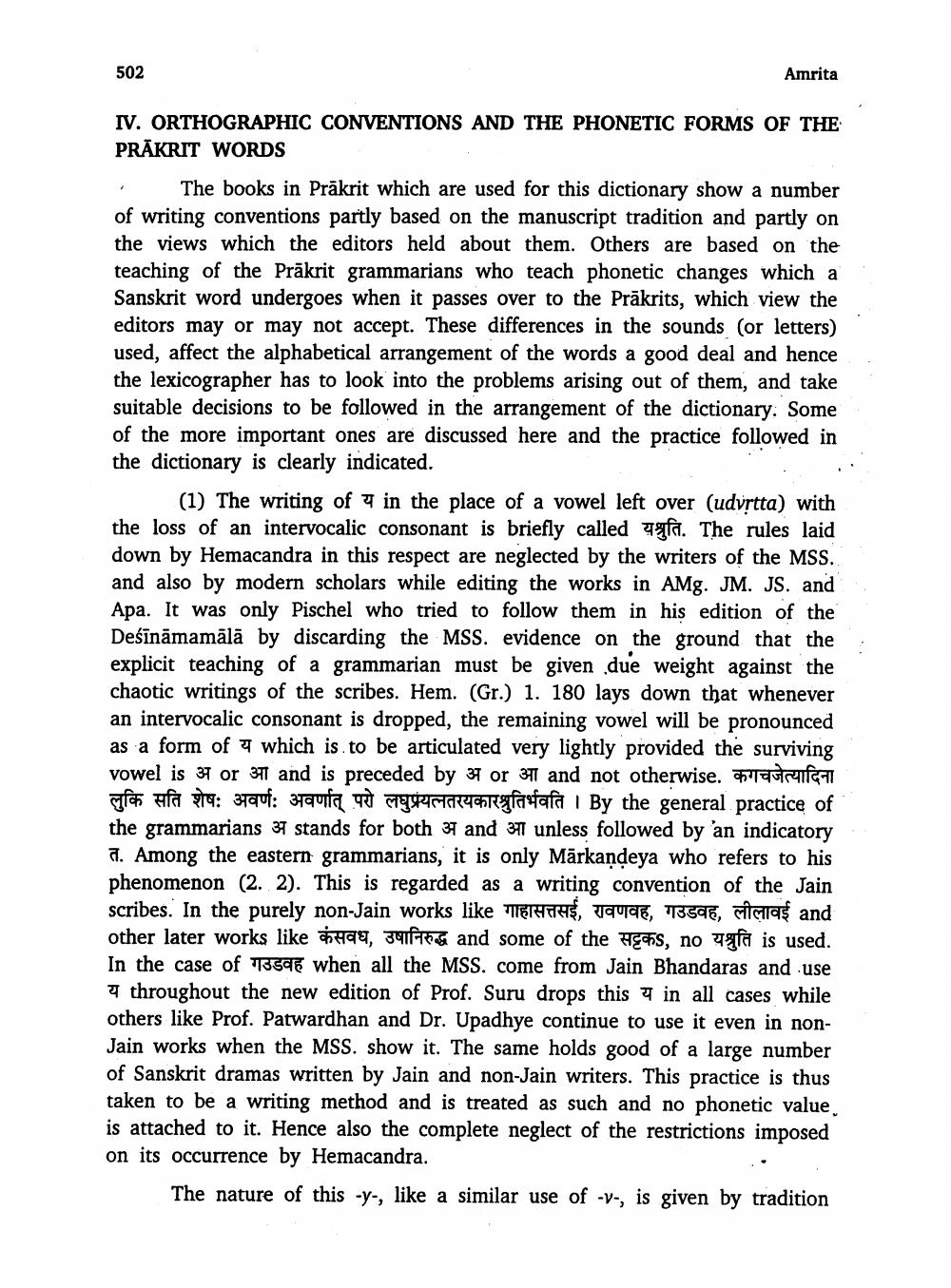________________
502
Amrita
IV. ORTHOGRAPHIC CONVENTIONS AND THE PHONETIC FORMS OF THE PRĀKRIT WORDS
The books in Prākrit which are used for this dictionary show a number of writing conventions partly based on the manuscript tradition and partly on the views which the editors held about them. Others are based on the teaching of the Prākrit grammarians who teach phonetic changes which a Sanskrit word undergoes when it passes over to the Prākrits, which view the editors may or may not accept. These differences in the sounds (or letters) used, affect the alphabetical arrangement of the words a good deal and hence the lexicographer has to look into the problems arising out of them, and take suitable decisions to be followed in the arrangement of the dictionary: Some of the more important ones are discussed here and the practice followed in the dictionary is clearly indicated.
(1) The writing of 4 in the place of a vowel left over (udvrtta) with the loss of an intervocalic consonant is briefly called tula. The rules laid down by Hemacandra in this respect are neglected by the writers of the MSS. and also by modern scholars while editing the works in AMg. JM. JS. and Apa. It was only Pischel who tried to follow them in his edition of the Deśīnāmamālā by discarding the MSS. evidence on the ground that the explicit teaching of a grammarian must be given due weight against the chaotic writings of the scribes. Hem. (Gr.) 1. 180 lays down that whenever an intervocalic consonant is dropped, the remaining vowel will be pronounced as a form of 2 which is to be articulated very lightly provided the surviving vowel is 37 or 371 and is preceded by 37 or 377 and not otherwise. TERUGA! Gfc afa ga: 3Tauf: 3Taufa percecrafastafa By the general practice of the grammarians 37 stands for both 37 and 37 unless followed by 'an indicatory a. Among the eastern grammarians, it is only Mārkandeya who refers to his phenomenon (2. 2). This is regarded as a writing convention of the Jain scribes. In the purely non-Jain works like गाहासत्तसई, रावणवह, गउडवह, लीलावई and other later works like कंसवध, उषानिरुद्ध and some of the सट्टकs, no यश्रुति is used. In the case of 13506 when all the MSS. come from Jain Bhandaras and use I throughout the new edition of Prof. Suru drops this 2 in all cases while others like Prof. Patwardhan and Dr. Upadhye continue to use it even in nonJain works when the MSS. show it. The same holds good of a large number of Sanskrit dramas written by Jain and non-Jain writers. This practice is thus taken to be a writing method and is treated as such and no phonetic value is attached to it. Hence also the complete neglect of the restrictions imposed on its occurrence by Hemacandra.
The nature of this -y-, like a similar use of -v-, is given by tradition




